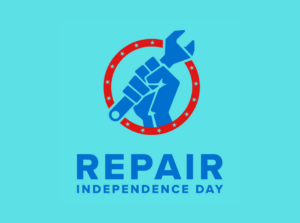In an era where sustainability is not just a buzzword but a necessity, the lifecycle of everyday items like cereal boxes becomes fascinating. Let’s take a look at the cereal box. A simple container made of boxboard, that can complete its circular journey in as little as six weeks.
1. Printed, Cut, and Folded, Filled, and Shipped
We’ll drop into the revolving journey of the cereal box at the manufacturer, where sheets of cardboard are printed, cut, and folded into the familiar shape of a cereal box. These sheets are typically made from a mix of recycled and virgin paper fibers. The focus on using recycled materials right from the start is a nod to sustainability.
In Minnesota, we have a major producer of breakfast cereal right here in the Twin Cities, and when they receive the packaging, they fill the boxes with cereal and ship them to retail stores. Here, they sit on shelves, waiting to be picked and purchased by shoppers.
2. Into Consumer Hands
After purchase, the cereal box finds its temporary home in a consumer’s kitchen. The length of this phase varies, but eventually, the cereal is consumed, and the box is ready for its next phase.
3. Tipped at Eureka’s MRF
Once the cereal is finished, the empty box is placed in your recycling cart. If you live in St. Paul, one of our bright green Eureka collection vehicles comes around to pick it up. In Minneapolis and other parts of the Twin Cities, our city partners and fellow haulers do the pick-up. Either way, the cereal box finds its way to Eureka’s Material Recovery Facility (MRF or “merf” for short) where it is sorted, baled, and prepped for shipment to the paper mill in St. Paul.
4. Transformation at the Paper Mill
We are also fortunate to have a major paper mill right here in St. Paul, only five miles away from our facility, so the journey of our cereal box is short, supporting the regional economy and limiting the fossil fuels consumed for transportation.
At the paper mill, the cardboard is shredded, pulped, and cleaned to remove inks, adhesives, and other contaminants. This process transforms the old cereal boxes into a slurry of paper fibers.
This slurry is then pressed, dried, and rolled into large sheets of recycled boxboard. The boxboard sheets return to a factory, much like where our journey began. Here, they’re once again printed, cut, and shaped into new cereal boxes. This closed-loop process significantly reduces the need for virgin materials and minimizes waste.
5. Back for Another Round!
Next, the boxboard makes its way back to our local producer, where it will be filled with crackers, cereal, and other dry goods, and then shipped back to stores, ready for another cycle.
The journey of a cereal box demonstrates how a closed-loop system not only conserves resources but also lessens the burden on landfills, reduces pollution, and often, as in the case of cereal boxes, saves energy.
Your participation in this process contributes to saving millions of trees annually – and significantly reduces water and energy consumption compared to producing paper and boxes from virgin materials. This collective effort helps mitigate deforestation, conserve water, and reduce greenhouse gas emissions.
It’s a journey that starts and ends with us, the consumers, and our choices at the grocery store and the recycling bin.
Take a Tour
Share this Story!

Repair Independence
It is Time to Assert Your Right to Repair Your Own Stuff! On July 1st, the Digital Fair Repair Act

Minnesota Passes Extended Producer Responsibility for Packaging
Minnesota just became the fifth state to pass Extended Producer Responsibility (EPR) for Packaging. The Packaging Waste & Cost Reduction

Strengthening the Economy and Environment Through Aluminum Recycling
The Importance of Aluminum Recycling Although aluminum is the most abundant element in the earth’s crust and the third most

Testimony: Packaging Waste & Cost Reduction Act (SF3561)
“I cannot stress enough that we cannot recycle and compost our way out of the packaging crisis. We need a
